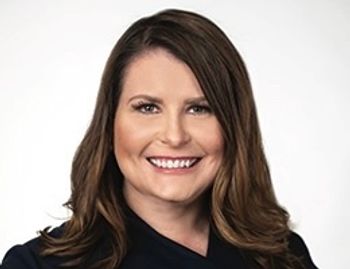
Healthgrades’ chief medical officer explains what sets America’s best hospitals apart
Brad Bowman talks with Chief Healthcare Executive® about the 2024 rankings, and common traits among those receiving top honors.
Over the years of developing the annual rankings for America’s best hospitals for Healthgrades, Brad Bowman has seen some common characteristics among the highly ranked hospitals.
Bowman is the chief medical officer and head of data science at Healthgrades. Today, Healthgrades released its lists of America’s 50 Best Hospitals, America’s 100 Best Hospitals and America’s 250 Best Hospitals. Healthgrades examined about 4,500 hospitals and compared their performance with common treatments and conditions to compile the list.
In an interview with Chief Healthcare Executive®, Bowman outlined some of the traits that set the elite hospitals apart.
“The one thing that we saw, with all of these, is they have standardized orders,” Bowman says. “So they're really decreasing variation in care in terms of every doctor just coming in and doing things their own way. They're very regimented …. they have a point of view as to what the right way to do things is, protocols, if you will, and then implement and adhere to those policies.” (See part of our conversation in this video. The story continues below.)
The top hospitals are also constantly examining their data on patient outcomes to assess trends, he says.
“They're, for the most part, measuring their own outcomes,” Bowman says. “So they all have quality teams that are running around looking at their own data.”
The top hospitals have a detailed understanding of their outcomes and complications, and where they rank with other competitors in the area, which also helps them see where they need to improve.
Many of the hospitals on the list also work with Healthgrades regularly on improvement efforts and are clients, Bowman says.
“In some ways, they're probably the hospitals that need us the least,” Bowman says. “But they're the hospitals that work us the hardest, because they really challenge us to find something that they can fix.”
Many of the top hospitals have a culture that demands continuous improvement, he says.
“That's just the type of culture,” Bowman says. “They're not defensive … they dare us to find something wrong, that they can improve on, because that's just how they're going to get better and better.”
In working with hospitals and health systems, Healthgrades will look at mortality rates and complication rates, and will examine the nature of their complications. And then they may take a closer look at the procedures. As they identify a root cause, Healthgrades will encourage them to develop an intervention plan. Healthgrades will share approaches that have been successful with other hospitals and health systems.
Hopefully, the hospital will revise internal protocols, and Healthgrades will measure a year later to see if the problem was addressed.
“We tend to do this on a service line level,” Bowman says. “We'll go in and we'll say we think your biggest opportunities are in your orthopedic surgery program, your knee replacements or whatever. But then ultimately, they decide what they want to work on.”
While he said it’s largely anecdotal evidence, Bowman suggests those ranking among the 250 best hospitals probably have higher levels of staffing.
The Healthgrades rankings of America’s top hospitals include some of the bigger players in the industry, including some of the nation’s most renowned systems. But the rankings also include some smaller hospitals that can match bigger providers in terms of quality, he says.
Hospitals are analyzed on outcomes, but Healthgrades also makes risk adjustments to try and fairly evaluate hospitals that are seeing sicker patients and are destinations for treating serious conditions, Bowman says.
“Some hospitals have older, sicker patients and other hospitals have younger, healthier patients,” he says. “So we use a national database and benchmark to predict how many deaths and complications should occur at each hospital each year by looking at every patient they've had for the past three years. And we look in terms of their age, their sex, and their co-morbidities.”
Healthgrades evaluates thousands of factors in its risk adjustment analysis of hospitals.
“It’s the biggest thing we do,” he says. “It's the most process intensive. It takes days to run, every time we do it.”
Healthgrades will review data from the Centers for Medicare & Medicaid Services on outcomes, and then they will examine the data from a hospital’s electronic medical records. If a patient came into the hospital with a certain condition, then that will be factored into the risk adjustment. But if the patient leaves with a complication that wasn’t present at admission, then Healthgrades factors that into its evaluations.
Most of the hospitals in the top 250 tend to appear on the list year after year, Bowman says. This year and last year, only about 50 dropped off the list.
“There's not a lot of churn,” he says.
Healthgrades examined outcomes for Medicare patients from 2020 through 2022. They also examined performance in specialty procedures to identify the top hospitals in 32 states.
“These hospitals are very unusual, and unusual in a good way,” Bowman says. “They're really good at almost everything.”






















































































